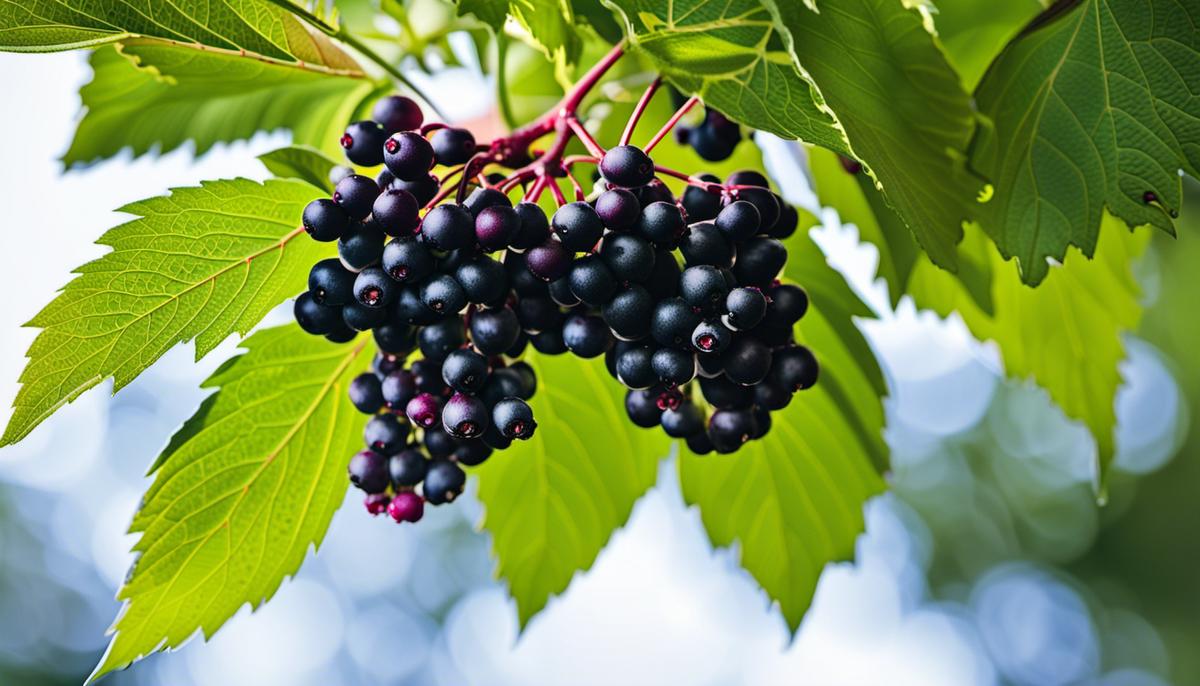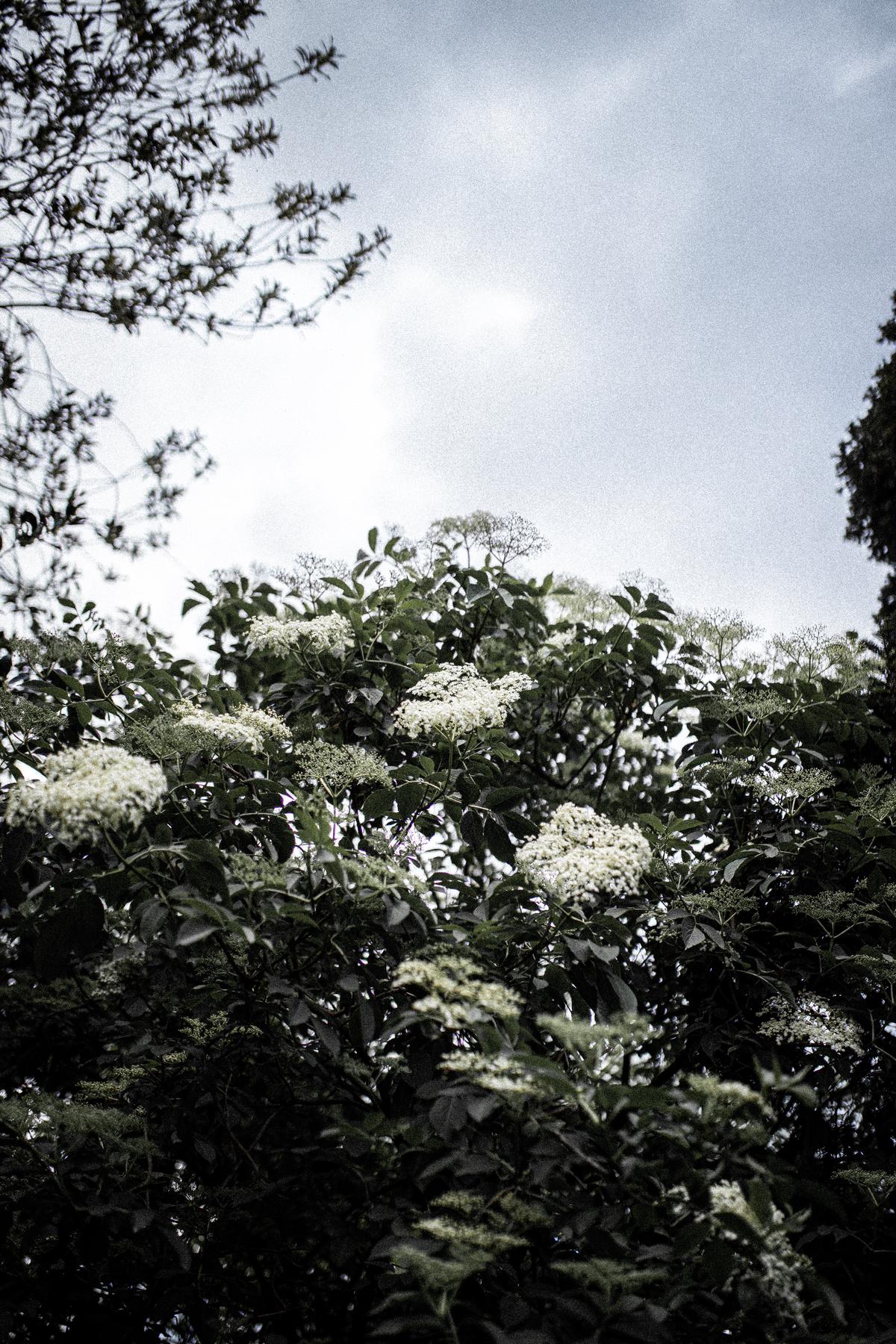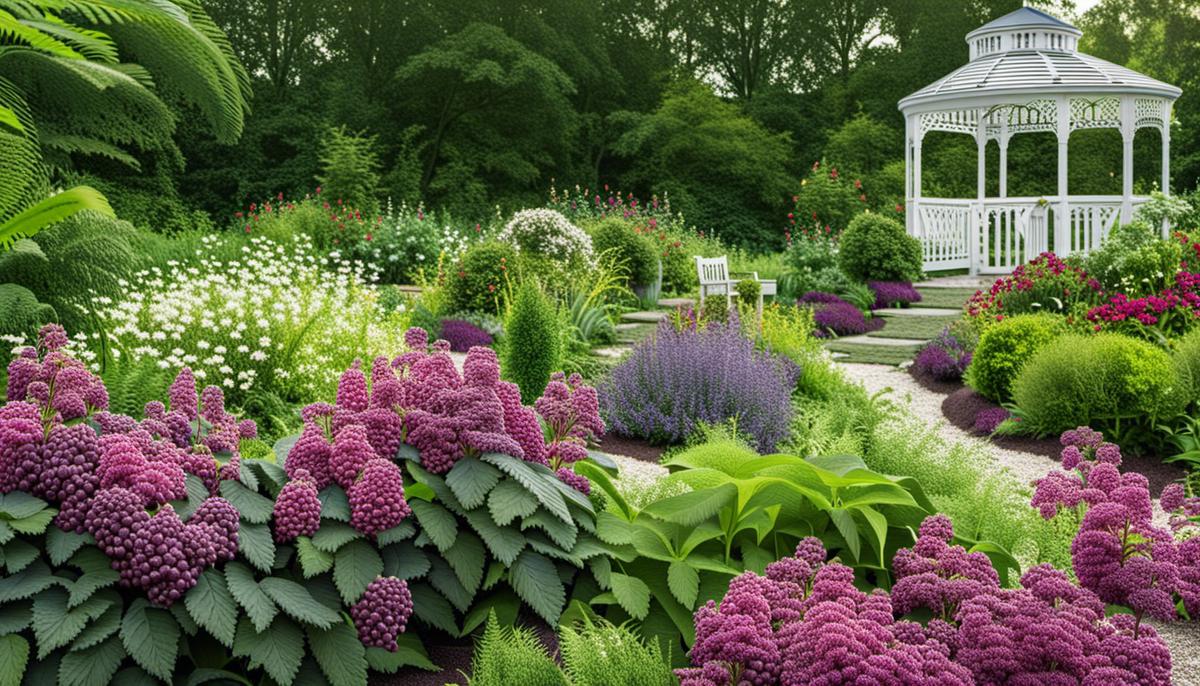
Steve Yoder
I'm Steve, a 30-something urban gardener fascinated by companion planting research. Growing up surrounded by greenery sparked my passion for gardening early on. I enjoy transforming my small backyard, experimenting with companion planting techniques and eco-friendly practices. Sustainability matters—I advocate for native plants and composting.
Table of Contents
The rewarding endeavor of cultivating your own garden brings with it an opportunity to learn and grow—both literally and metaphorically. In particular, the cultivation of elderberries presents a unique set of joys and challenges. Elderberries, with their sizeable abundance of fragrant flowers and nutritious, antioxidant-rich fruit, are an excellent addition to home gardens. They appeal not only to the gardener’s eye but also serve a utilitarian purpose in creating enhanced biodiversity and fruitful yield.
This discussion provides a comprehensive guide to understanding elderberry companion plants: their biology, growth requirements, and habitat preferences. It further delves into the art and science of companion planting— a holistic approach to gardening that often results in increased plant health and productivity. It highlights the best companion plants for elderberries and provides practical advice on how to execute successful elderberry companion planting.
Understanding Elderberries
Understanding Elderberries: Growth Habits and Requirements
Elderberries, also known as Sambucus nigra, are plant species native to parts of North America and Europe. They are hardy, versatile, and can tolerate a variety of climate conditions making them a popular choice for gardeners. Recently, however, these plants have increased popularity due to their medicinal properties and culinary uses. As a fruit-bearing shrub, elderberries require specific conditions to thrive.1
One of the basic requirements for elderberries is the correct soil type. They prefer a well-drained, loamy soil, generally with a pH level between 5.5 and 6.5. However, they can adapt to almost any soil type as long as it is not completely waterlogged. Ordinarily, the soil should be rich in organic matter and should retain some level of moisture. This enables the elderberries to maintain their health and productivity.
Elderberries are also sunlight lovers. They require ample sunlight for healthy growth and fruiting, with a standard requirement of at least six hours of direct sunlight every day. In partial shade, they may still grow but their yield may not be as abundant. Additionally, elderberries are cold-hardy plants and can tolerate freezing temperatures, which makes them ideal for growth in USDA zones 3 through 9.
Although elderberry plants are remarkably resilient, they are not immune to pests and diseases. They can suffer from various problems such as elderberry borers, canker, and fungus diseases. In order to keep your elderberries healthy, regular pest control and plant care is necessary.

Importance of Companion Planting
Embracing the Concept of Elderberry Companion Planting
Elderberries are celebrated for both their health-boosting properties and their culinary versatility. However, growing elderberries successfully in a garden extends beyond just the berry-bearing plants themselves. It involves harnessing the power of companion planting, a method which promotes plant diversity and mirrors nature’s strategy for fostering growth and survival.
Promoting Elderberry Health and Productivity
Elderberry companion plants aid in enhancing the general well-being and productivity of elderberry plants. Some plants, like legumes, have nitrogen-fixing properties, creating a symbiotic relationship with elderberries and other vegetation by improving soil fertility. This natural fertilization increases the overall health and yields of elderberries.
Elderberry companion plants such as yarrow or comfrey act as dynamic accumulators, gathering minerals from deep within the soil and depositing them on the surface via leaf drop, thereby enriching the soil’s nutrient content. Eventually, these nutrients are absorbed by elderberry plants, improving their fruit quality.
Deterrence of Pests
Perhaps one of the most significant benefits of elderberry companion plants is their ability to deter pests. Companion plants can reduce pest outbreaks by serving as more attractive bait, drawing pests away from the elderberries, or by releasing compounds that confuse or repel pests.
For elderberries, interplanting with allium family members like chives or onions can help fend off pests with their pungent odor. Marigolds can also deter harmful insects due to their specific scent.
Enhancing the Garden Ecosystem
Companion planting greatly contributes to the biodiversity of a garden by attracting a variety of birds, fungi, insects, and microorganisms which all play essential roles in maintaining a robust garden ecosystem. Elderberry companion plants can lure beneficial insects and pollinators to the garden, promoting natural pollination and regulating detrimental pest populations.
These companion plants also provide habitat for crucial garden allies like spiders or predatory beetles that prey on problematic pests. Moreover, a biodiverse garden might be more resilient to diseases and weather-related stresses.
When it comes to successfully cultivating elderberry companion plants, it’s crucial to not only focus on the growth and well-being of the elderberry plant, but also take into consideration other factors that help maintain the overall vitality of your garden ecosystem. By employing the right companion planting techniques, one can ensure that the elderberry bushes flourish, leading to a thriving garden ecosystem.

Best Elderberry Companion Plants
Interplay of Elderberries with Companion Plants
Renowned for their medicinal properties, elderberry plants can reach their full growth potential when surrounded by the right companion plants. The benefits go beyond mutual growth enhancement, as the right pairing of elderberries and their companion plants can contribute to pest control and even enrich the fertility of the soil.
Companion Plants for Elderberries
Among many, the best elderberry companion plants include:
Dill

Dill makes a great companion plant primarily because it attracts beneficial insects like lacewings, ladybugs, and tiny wasps. These insects help control pests that can harm elderberry plants. Dill also provides a micro-environment that is favorable for elderberries. It can be planted directly with elderberry in early spring. Dill requires sunlight and well-drained soils similar to elderberries. We also prepared a article for dill companion plants. Check out the article: Dill Companion Plants – Best 11 & Bad 2
Fennel
Like dill, fennel also attracts beneficial insects and provides a favorable micro-environment for elderberry plants. Moreover, fennel can help repel pests like aphids, slugs, and beetles. Both the fennel and elderberry can be planted together in early spring in a sunny location. For more information about fennel companion plants make sure to follow the article: 7 Great Fennel Companion Plants for Your Garden (+4 not to Combine)
Mint

Mint helps deter pests that harm elderberries, like aphids and cabbage moths, with its strong aroma. Mint prefers a similar growing condition as elderberries, enjoying moist, well-drained soil under full sunlight. However, mint can spread aggressively, so it’s better to plant mint in containers near elderberries. Mint companion plants can be found here: Mint Companion Plants – Do They Even Exist?
Tomatoes

Tomatoes can benefit from elderberries because elderberries attract insects that pollinate tomato flowers. Tomatoes prefer full sun and well-drained soil, conditions similar to elderberries. Tomatoes should be planted after the last chance of frost, usually at a distance of 36 inches from elderberry plants. Best tomato companion plants: 8 Helpful Tomato Companion Plants (+4 to Avoid)
Hawthorn
Hawthorn shrubs make good elderberry companion plants as they offer shelter for beneficial birds and insects, helping control pests. Hawthorn and elderberries can share similar growing conditions, with both preferring full sun or partial shade and well-drained soil. They can be planted together in the fall or early spring.
Dog Rose
Dog rose, or Rosa canina, another shrub in the list of the best elderberry companion plants. It provides beautiful flowers and attracts beneficial insects. Like elderberries, dog rose prefers full sun to partial shade and well-drained soil. It’s ideal to plant dog rose in the fall or early spring with a spacing of 16 inches from elderberry plants.
Understanding the optimal growing conditions each plant requires and how they can positively interact with each other is essential when deciding on complementary plants for your elderberry crop. There are numerous plants that can prove to be beneficial when grown in close proximity to elderberries.2

Tips for Successful Elderberry Companion Plants
What is Companion Planting and Why is it Essential?
Companion planting, a common method that includes cultivating various species in unison for shared advantages, serves a pivotal role. This practice can dramatically enhance the growth and robustness of each plant by triggering beneficial interactions while mitigating undesirable ones. In the case of elderberry plants, selecting the correct companion plants can promote growth, deter pests, and increase overall yield.
Planting Methods and Spacing Requirements
When planting elderberries, it’s crucial to pay attention to the space between the plants. Elderberries tend to grow into large bushes and need plenty of room to grow and spread their branches. Traditionally, elderberries are planted in rows 10 feet apart with individual plants spaced 6-10 feet apart within each row. Any companion plants should be planted at an equal or greater distance to prevent competition for nutrients and ensure adequate sunlight reaches all plants.
For a companion like mint, it should be planted in pots to control its aggressive spreading behavior. Similarly, bulb plants should be planted before the elderberry bush spreads its branches, while root crops should be spaced in such a way that they fall within the drip line of the elderberry bush, but still receive adequate light.
Care and Maintenance of Elderberries and Their Companions
All plants, including elderberries and their companions, require ongoing care and attention. They need to be watered regularly, especially during dry spells, and fed with organic fertilizer once or twice a year. Specific care for companion plants might vary, but generally, they need to be pruned in early spring and monitored for any signs of disease or pest infestation.
Elderberries are generally robust plants that can withstand various conditions but be mindful of fungal diseases and pests like elderberry borer beetles and aphids. Herbs like mint and dill, on the other hand, are quite hardy and need little maintenance, while bulb plants need to be divided every few years to prevent overcrowding.
Troubleshooting Common Problems
Observation is the key to troubleshooting problems with elderberries and their companion plants. If the plants show any sign of distress, such as yellowing leaves, stunted growth, or the presence of pests, it’s essential to act fast. Common pests can be managed through natural pest control methods, companion planting, or the use of organic pesticides.
Fungal diseases can be handled by improving air circulation around the plants, reducing overhead watering, and applying an organic fungicide if necessary. In terms of nutrient competition, this can be solved by applying ample amounts of compost or organic fertilizer and ensuring proper spacing when planting.
Remember, each plant grouping will have its own unique challenges and rewards. The keys are understanding the individual needs of each plant, monitoring your plants closely, and responding to changes in a timely and appropriate manner.

Embarking on a gardening journey with knowledge and planning can pave the way for a fruitful harvest and a healthy garden. Understanding elderberries and their companion plants, as the above guide strives to help you do, unlocks many benefits that transcend mere aesthetic appeal. The wisdom of companion planting, selecting the right partners for your elderberries, and employing practical hands-on experience, is useful not only for gardening beginners but seasoned horticulturists as well.
This game-changing approach can mean the difference between a fleeting gardening passion and a lifelong love for nature’s miracles. Dive into the world of elderberry planting, experience the joy of watching these wonderful plants flourish and witness how they improve the vibrancy and productivity of your garden.
References
- Milbury, P. E., Cao, G., Prior, R. L., & Blumberg, J. (2002). Bioavailablility of elderberry anthocyanins. Mechanisms of ageing and development, 123(8), 997-1006. Retrieved from: Bioavailablility of elderberry anthocyanins – ScienceDirect
- Özgen, M., Scheerens, J. C., Reese, R. N., & Miller, R. A. (2010). Total phenolic, anthocyanin contents and antioxidant capacity of selected elderberry (Sambucus canadensis L.) accessions. Pharmacognosy magazine, 6(23), 198. Retrieved from: Total phenolic, anthocyanin contents and antioxidant capacity of selected elderberry (Sambucus canadensis L.) accessions – PMC (nih.gov)

